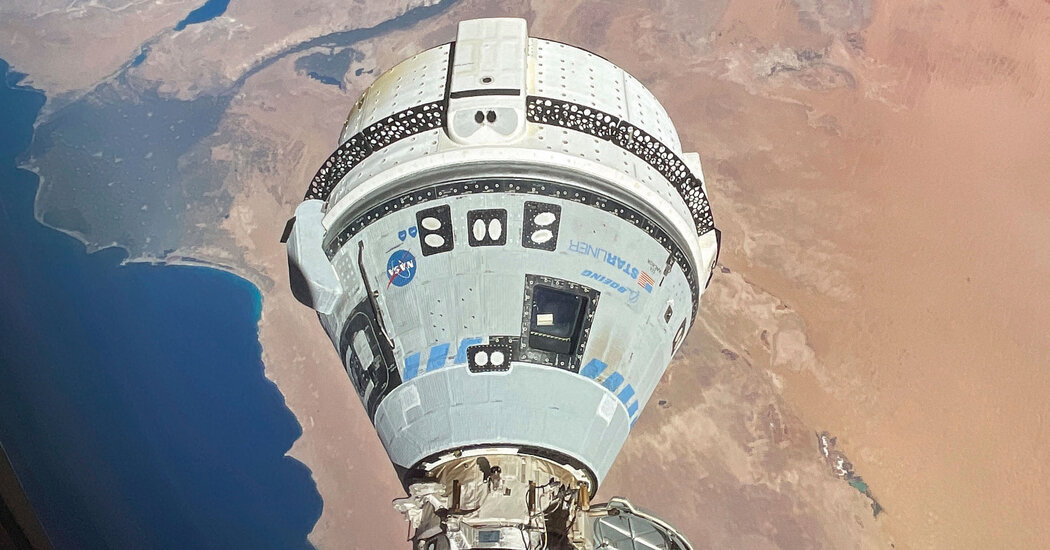With the Falcon 9 rocket set to fly again, and testing of the Starliner capsule progressing, the agency is seeking to turn the page on a brief, troubled chapter in orbit.
NASA officials on Friday said they expected congestion at the International Space Station in the coming month, following a couple of weeks in which it seemed that the agency’s ability to transport astronauts to and from orbit was stuck in a holding pattern.
But the officials portrayed the orbital traffic jam as a good thing.
“We have never had so many vehicles and so many options,” Ken Bowersox, the associate administrator who leads NASA’s space operations mission directorate, said during a news conference on Friday. “It complicates our lives, but in a really good way.”
Operations at the space station have been more eventful than usual lately. A new Boeing spacecraft experienced propulsion problems en route to the space station. The astronauts on the station had to shelter for a while after a defunct Russian satellite disintegrated. A couple of spacewalks were called off because of problems with the spacesuits. And the question of when SpaceX could next fly more astronauts emerged after a rocket’s failure in orbit.
Those problems may now be clearing up.
Agency officials said the next launch of a SpaceX Crew Dragon spacecraft, the ninth mission by SpaceX to take four astronauts for a six-month stay at the space station, or Crew-9, is scheduled for no earlier than Aug. 18.
But before that crew can head to space, the plan is for Starliner, a troubled spacecraft built by the aerospace giant Boeing that is now docked at the space station, to finally return to Earth with two NASA astronauts. The astronauts on the Starliner test flight, Suni Williams and Butch Wilmore, have been on the space station for weeks longer than originally planned as engineers diagnosed issues with the spacecraft’s propulsion system.
After the next Crew Dragon launch, another Crew Dragon, which is now docked at the space station, is scheduled to bring home four of the station’s current occupants, ending their six-month stay.
